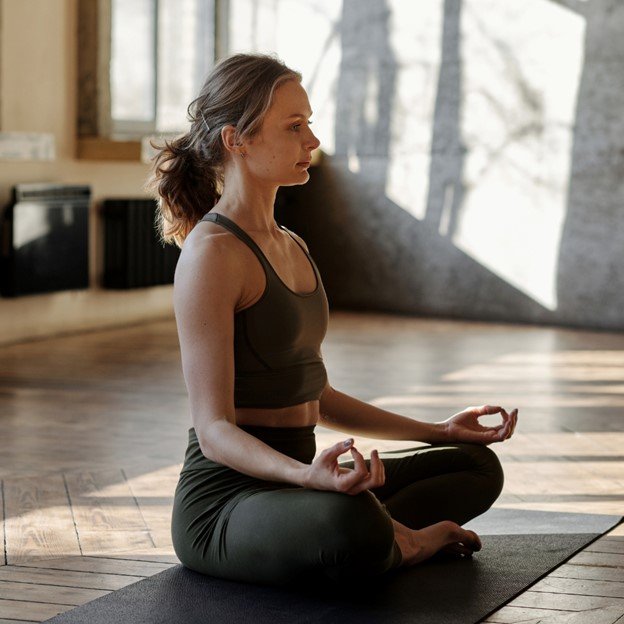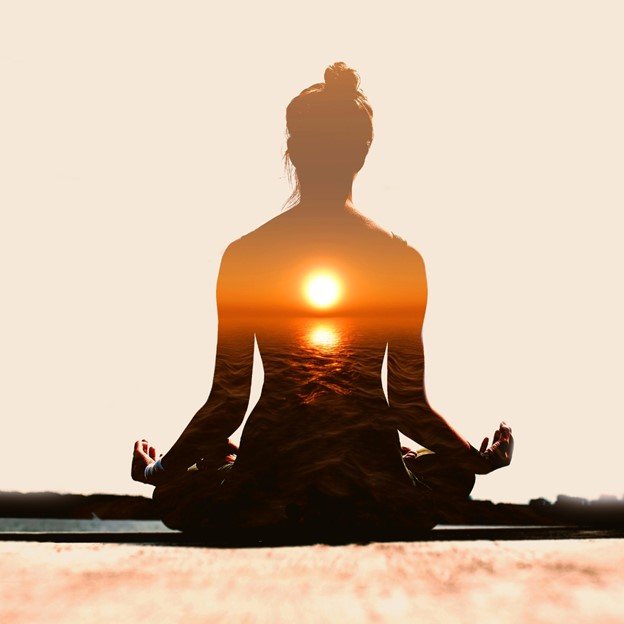Yoga For Back Pain
In the labyrinth of modern living, where sedentary habits and the demands of daily life often cast a shadow over physical well-being, “Yoga for Back Pain” emerges as a guiding light. A tailored practice that beckons individuals to embark on a journey of relief and resilience. This specialized exploration into the realm of yoga is not merely a series of postures. It is a holistic approach, an invitation to unravel the complexities of back pain through intentional movement, breath, and mindfulness.
The prevalence of back pain, often a silent companion in our daily lives, calls for a nuanced solution that extends beyond conventional approaches. “Yoga for Back Pain” unfolds as a unique tapestry. A synthesis of ancient yogic wisdom and modern understanding of anatomy and movement. This practice recognizes the intricate web connecting the physical, mental. And emotional aspects of back pain, weaving together a sequence of postures and techniques designed to alleviate discomfort, restore balance. And foster a renewed sense of well-being.

As we delve into this journey, each asana becomes a tool, not only to stretch and strengthen muscles but also to create space for healing energy to flow. The breath, a constant companion in yoga, becomes a guide. A rhythmic force that encourages relaxation, reduces tension. And supports the body’s natural ability to rejuvenate. Mindfulness takes center stage.
In essence, “Yoga for Back Pain” is not just an assemblage of poses; it is a narrative of self-care, an ode to the body’s inherent ability to heal and thrive. As practitioners embark on this transformative journey. They enter a realm where the wisdom of yoga converges with the intricacies of the spine. Guiding them towards a path of relief, rejuvenation. And a profound reconnection with the resilience that resides within.
Understanding the Spinal Landscape
In the intricate tapestry of the human body, the spine stands as a sentinel of support and mobility, and in the realm of yoga for back pain, understanding its intricate landscape becomes paramount. This subheading invites practitioners to embark on a journey of anatomical exploration through a yogic lens. An exploration that transcends the conventional understanding of the spine and dives into the dynamic interplay of bones, muscles, and energy.
A yogic approach to the spinal landscape delves beyond the static view of vertebrae and discs. It acknowledges the spine as a fluid and adaptable structure, responding not only to physical movements but also to the subtleties of breath and awareness. The vertebral column, often seen as a stack of bones, becomes a conduit for the flow of energy. With each vertebra serving as a point of connection to the intricate web of the nervous system.
As practitioners deepen their understanding, they discover the profound impact of the spine on overall well-being. A misalignment or tension in one area of the spine can resonate throughout the body, influencing posture, movement, and even emotional states. Yogic philosophy recognizes the spine as a conduit for the vital life force, or prana. Emphasizing the importance of maintaining its integrity for the free flow of energy and holistic health.
In essence, “Understanding the Spinal Landscape: A Yogic Approach” becomes an invitation to explore the spine not merely as a structure of bones but as a dynamic, living entity—a central axis around which the symphony of yoga for back pain unfolds. As practitioners delve into the intricacies of their spinal landscape, they embark on a journey of self-discovery, cultivating a relationship with their spine that is rooted in awareness, respect. And a profound appreciation for the intricate dance of life within
Gentle Stretches for Lumbar Comfort
In the pursuit of alleviating back pain through yoga, the realm of lumbar comfort unfolds as a sanctuary of intentional and gentle stretches, carefully designed to offer relief to the lower back.
This part of the yogic journey involves a deliberate examination of the lumbar region, which is particularly vulnerable to the effects of sedentary lifestyles and daily demands.
The gentle stretches curated for lumbar comfort serve as a balm for the lower back, inviting practitioners to engage in deliberate movements that prioritize both safety and efficacy. As individuals move through each stretch, the focus is not solely on achieving a particular posture but on cultivating a heightened awareness of the sensations arising within the lumbar spine. This intentional approach fosters a sense of connection as practitioners become attuned to the nuances of tightness, release, and the subtle shifts that unfold with each breath.
The beauty of these gentle lumbar stretches lies in their adaptability. They become accessible tools for individuals of varying fitness levels and yoga experiences, emphasizing the inclusive nature of yoga for back pain relief. The deliberate and unhurried nature of these stretches encourages practitioners to listen to their bodies, honoring the present state of the lumbar spine and progressing at a pace that aligns with their unique needs.
Beyond the physical aspect, the practice of gentle lumbar stretches becomes a mental and emotional sanctuary. The intentional breathwork woven into these stretches becomes a guide for practitioners to cultivate a sense of calm and presence—a mindful journey that extends beyond the mat and into the fabric of daily life. As individuals embrace these stretches, they enter a realm where each movement becomes an expression of self-care, offering a respite for the lumbar spine and a pathway to lumbar comfort that is gentle, nurturing, and profoundly transformative.
Core Strengthening
In the intricate landscape of yoga for back pain, the focus on core strengthening becomes a foundational pillar—a deliberate and transformative approach to building support for the spine. This segment of the yogic journey recognizes the core not merely as a set of muscles but as a dynamic powerhouse intricately connected to the stability and resilience of the entire spinal structure.
The intentional engagement of the core muscles is not a pursuit of aesthetic abdominal strength alone; it is a strategic endeavor to fortify the spine, offering a robust foundation for optimal spinal alignment and mitigating the impact of back pain. As practitioners delve into core-strengthening yoga poses, the journey becomes more than a physical exercise; it transforms into a symbiotic relationship between strength, stability, and the intricate dance of the spine.
The intentional integration of breathwork amplifies the impact of core-strengthening practices. The rhythmic breath becomes a vital force, enhancing the mind-body connection and fostering a deep awareness of the core’s engagement. This breath-centric approach not only ensures the effectiveness of the core-strengthening journey but also infuses the practice with a meditative quality, encouraging practitioners to move with intentionality and presence.
In essence, core strengthening for spinal support is not a one-dimensional pursuit. It is an invitation to embark on a holistic journey. A journey that honors the intricate dance of muscles, breath, and spine. As practitioners delve into the depths of their core. They unravel a profound connection between strength and vulnerability, resilience and adaptability. The journey becomes a celebration of the body’s inherent wisdom. A recognition that, through intentional and mindful core strengthening, individuals lay the groundwork for a spine that is not only strong and stable. But also a conduit for the fluid and dynamic expression of life.
Breathwork for Relaxation and Pain Relief
In the symphony of yoga for back pain, the transformative power of breathwork takes center stage. A deliberate and nuanced exploration into the art of conscious breathing for relaxation and pain relief. This segment of the yogic journey recognizes the breath not merely as a physiological function. But as a gateway to the profound interplay between the nervous system, the mind, and the experience of pain within the body.
As practitioners engage in intentional breathwork, the journey unfolds beyond the realm of oxygen exchange. Specific pranayama techniques become vehicles for fostering relaxation and alleviating pain in the back. Diaphragmatic breathing, with its focus on deep abdominal breaths, becomes a foundational practice—a rhythmic dance that signals to the body that it is safe. Promoting the activation of the parasympathetic nervous system. And a shift from the stress response to a state of rest and digestion.
Moreover, the breath becomes a guide for navigating the nuances of pain within the body. As practitioners engage in breath-focused awareness. They learn to observe sensations without resistance or aversion, creating a space for the gentle unwinding of tension. This mindful approach to breathwork becomes a bridge between the physical. And emotional dimensions of pain, encouraging practitioners to cultivate a compassionate awareness that extends beyond the physicality of the practice.

Beyond the mat, the practices of breathwork become portable tools for individuals to carry into their daily lives. As they encounter moments of discomfort or stress, the intentional breath becomes a refuge—a source of calm in the midst of life’s demands. The breath, as a constant companion, becomes a reminder that individuals possess an innate capacity to modulate their internal state. Fostering a sense of empowerment in the face of pain.

Mindfulness Practices
In the complex world of yoga for back pain, the practice of mindfulness emerges as a guiding light. It involves a deliberate and transformative exploration of meditation aimed at cultivating awareness of back health. This aspect of the yogic journey goes beyond physical postures and breath. Inviting practitioners to delve into the present moment with a keen and non-judgmental awareness. This awareness extends beyond the surface of sensation and into the intricate nuances of the mind-body connection.
Mindfulness practices for back health encompass a spectrum of techniques. Each designed to foster a deep and intentional connection with the present. Body-scan meditations have become a foundational practice, encouraging practitioners to systematically explore and release tension within the body. As individuals bring their attention to each area of the back. They cultivate a profound sense of embodied awareness. Unraveling patterns of holding and allowing the breath to permeate areas of discomfort with a sense of ease.
Beyond the physical, mindfulness practices become a journey into the emotional and spiritual dimensions of back health. The non-judgmental observation of thoughts and emotions allows practitioners to navigate the intricate relationship between stress, emotions. And pain—an exploration that fosters self-compassion and resilience.
In essence, “Mindfulness Practices: Cultivating Awareness for Back Health” becomes an invitation to step into the present moment with a sense of curiosity and openness. As practitioners navigate the terrain of their inner landscape with mindfulness. They embark on a journey of self-discovery—a journey that goes beyond the alleviation of back pain and becomes a celebration of the transformative power of awareness in fostering a harmonious relationship between mind, body, and spine.

Conclusion
The journey of “Yoga for Back Pain” is complex. However, it concludes with a powerful affirmation that the practices involved in this tapestry extend beyond the mat. And invite practitioners into a realm where yoga wisdom meets the intricacies of the spine. Throughout this exploration, it becomes evident that the intentionality behind each breath, the deliberate movement within each pose. And the mindful awareness cultivated throughout are threads that together compose a holistic approach to back health.
The understanding of the spinal landscape serves as a compass, guiding individuals to appreciate the spine not just. As a physical structure but as a dynamic channel for the flow of life energy. Gentle stretches for lumbar comfort become tender offerings to the lower back. Providing solace and also fostering a sense of suppleness. Core strengthening becomes a fortification. An intentional act of building support that transcends physical strength and permeates into the stability of daily life.
The conclusion of “Yoga for Back Pain” is not an endpoint but a commencement. An invitation for practitioners to continue this journey of self-discovery, self-care, and mindful living. The practices learned on the mat become guiding principles. Encouraging individuals to approach their bodies and their experiences with compassion, curiosity, and a sense of reverence. The wisdom gained becomes a foundation for a life in harmony with the spine. An embodiment of the transformative power that lies within the intentional and holistic practices of yoga for back health. In essence, this journey concludes as an ode to the innate potential for well-being that resides within each individual. A potential that unfolds not as a destination but as a continuous, evolving symphony of health, awareness, and self-discovery.
BY SWAMI SRI RAM
Ancient Himalayan Lineage of Yogis



